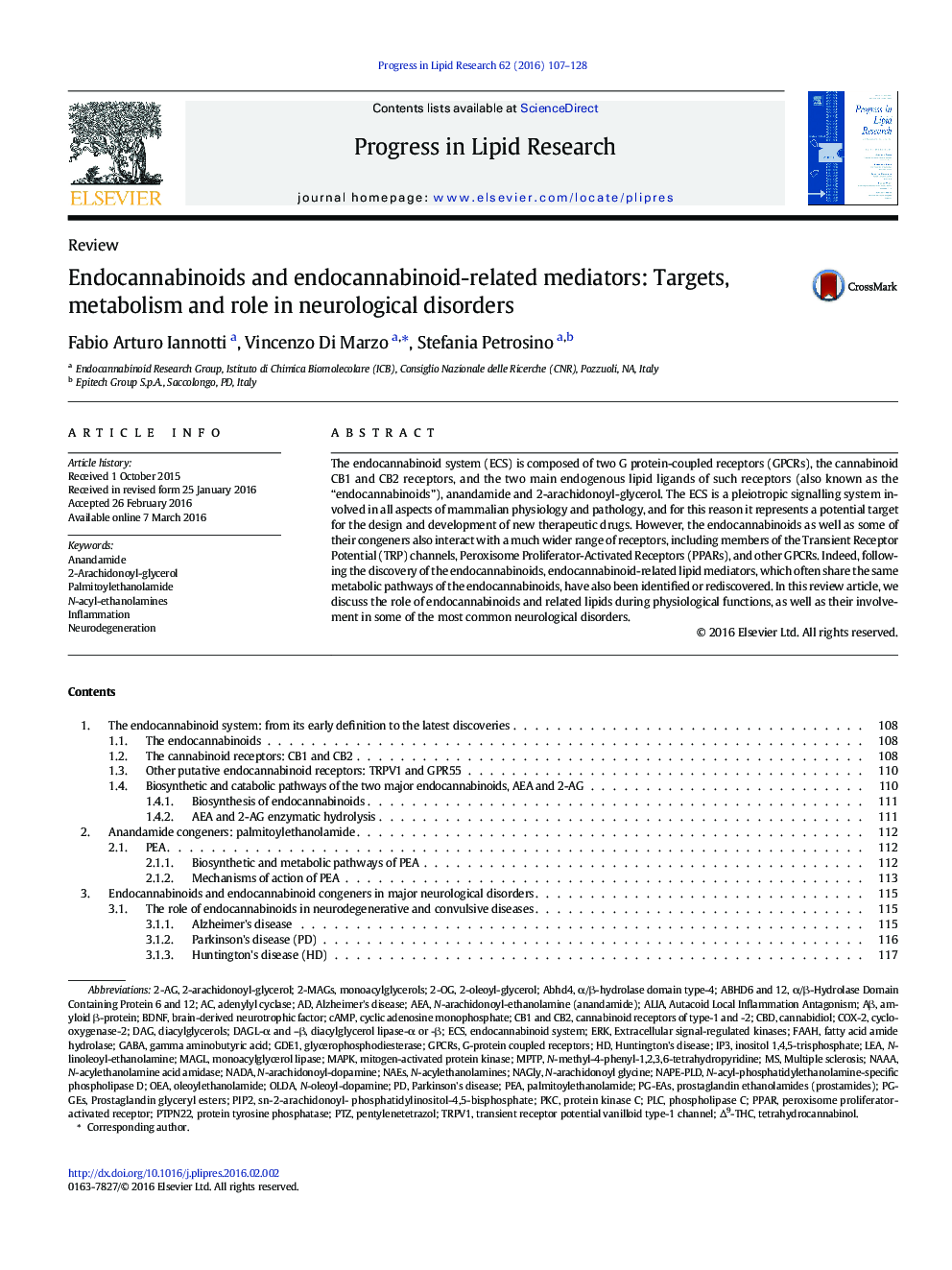| کد مقاله | کد نشریه | سال انتشار | مقاله انگلیسی | نسخه تمام متن |
|---|---|---|---|---|
| 2019093 | 1542168 | 2016 | 22 صفحه PDF | دانلود رایگان |
The endocannabinoid system (ECS) is composed of two G protein-coupled receptors (GPCRs), the cannabinoid CB1 and CB2 receptors, and the two main endogenous lipid ligands of such receptors (also known as the “endocannabinoids”), anandamide and 2-arachidonoyl-glycerol. The ECS is a pleiotropic signalling system involved in all aspects of mammalian physiology and pathology, and for this reason it represents a potential target for the design and development of new therapeutic drugs. However, the endocannabinoids as well as some of their congeners also interact with a much wider range of receptors, including members of the Transient Receptor Potential (TRP) channels, Peroxisome Proliferator-Activated Receptors (PPARs), and other GPCRs. Indeed, following the discovery of the endocannabinoids, endocannabinoid-related lipid mediators, which often share the same metabolic pathways of the endocannabinoids, have also been identified or rediscovered. In this review article, we discuss the role of endocannabinoids and related lipids during physiological functions, as well as their involvement in some of the most common neurological disorders.
Journal: Progress in Lipid Research - Volume 62, April 2016, Pages 107–128
